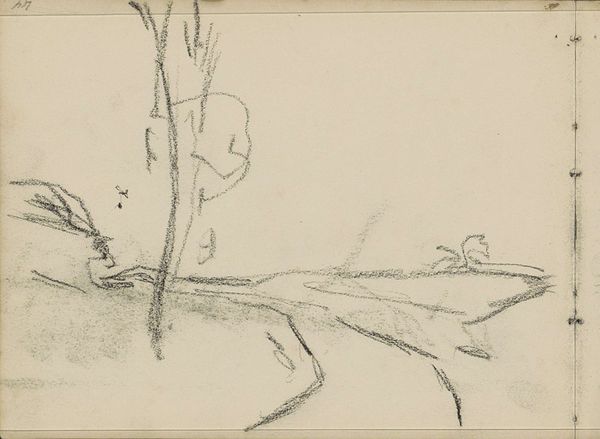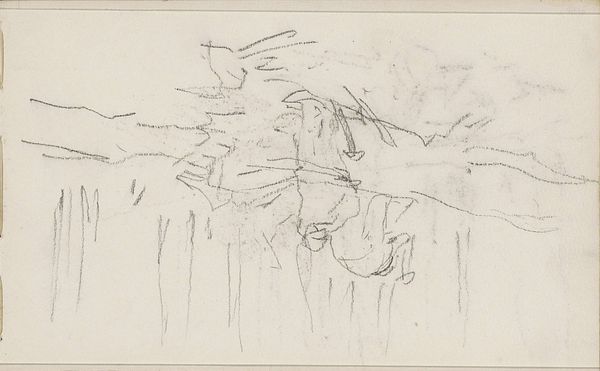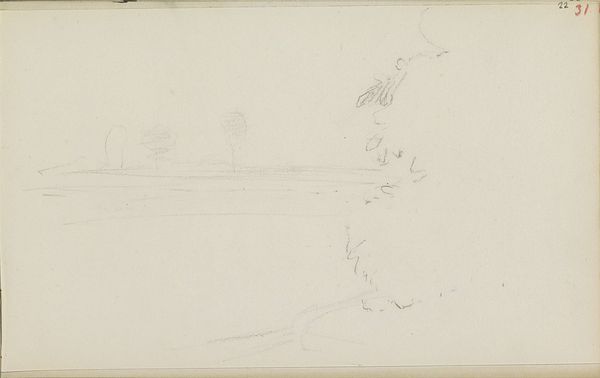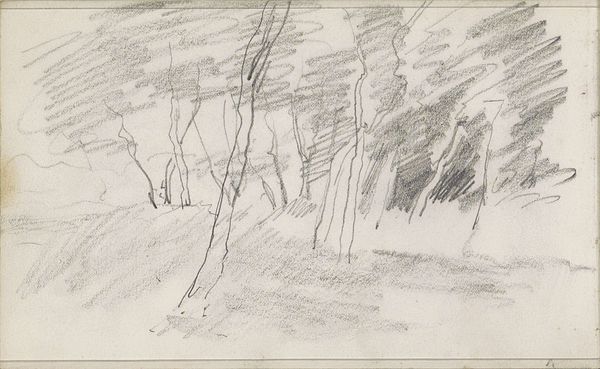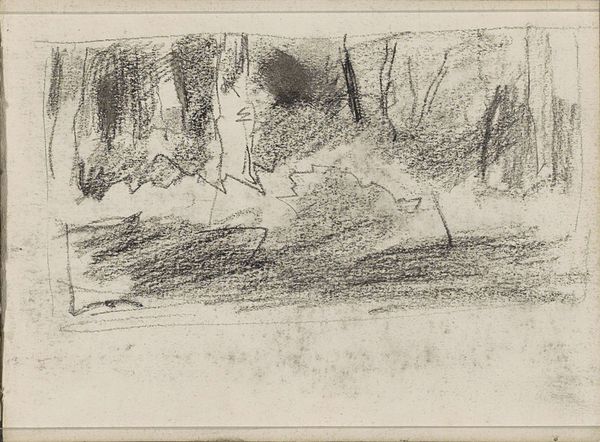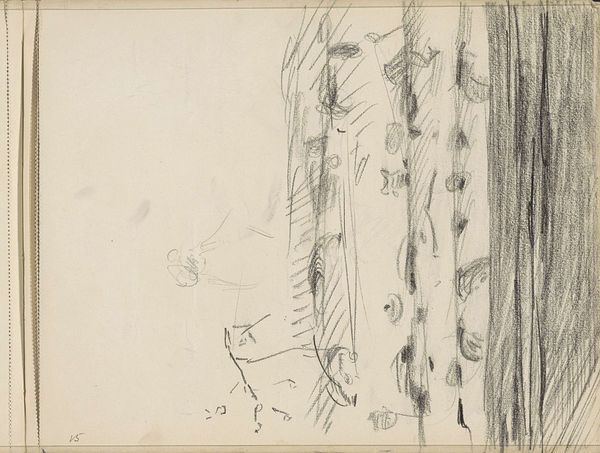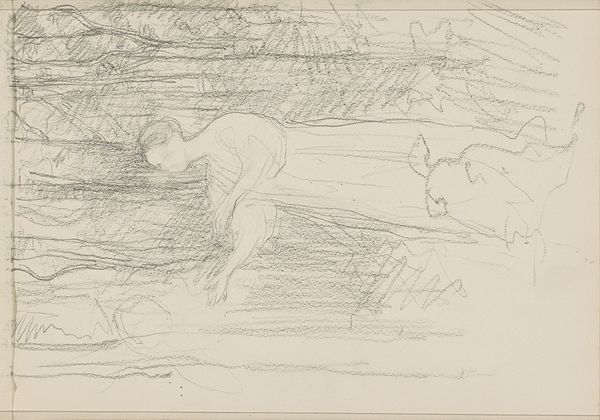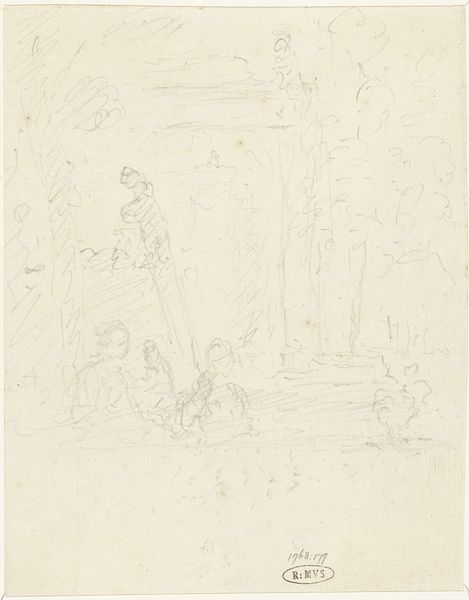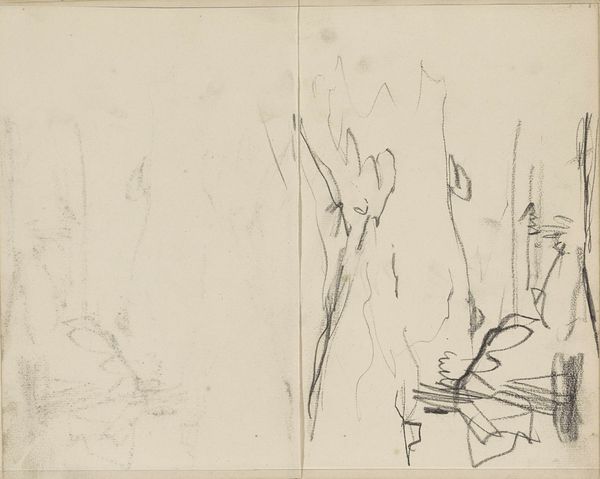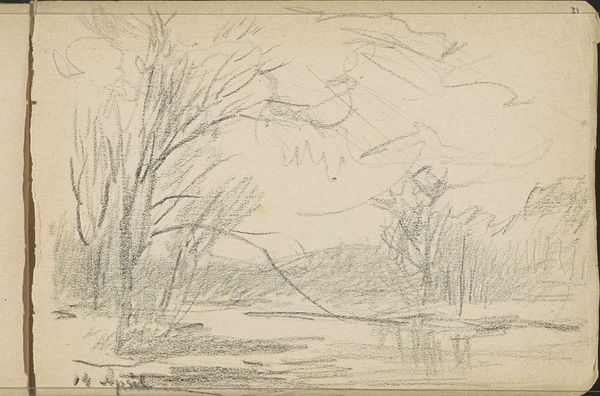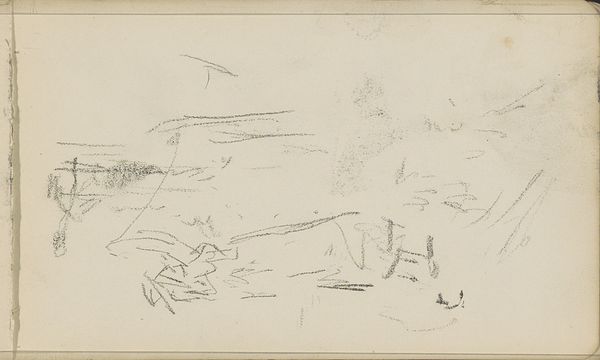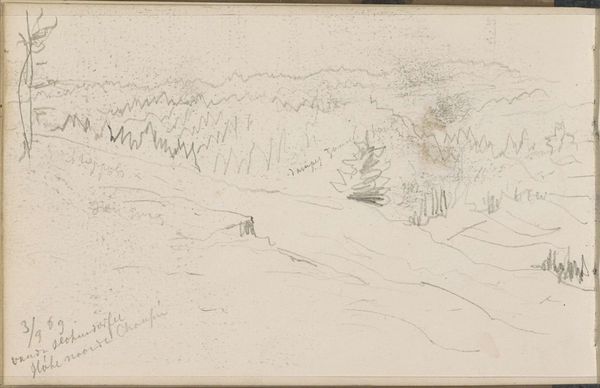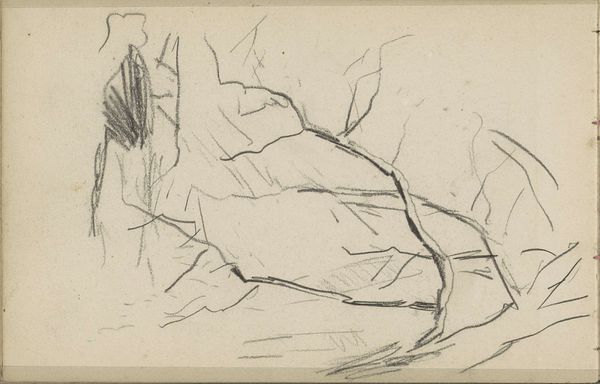
drawing, pencil
#
drawing
#
amateur sketch
#
toned paper
#
light pencil work
#
pencil sketch
#
incomplete sketchy
#
landscape
#
personal sketchbook
#
ink drawing experimentation
#
pen-ink sketch
#
pencil
#
line
#
sketchbook drawing
#
sketchbook art
#
realism
Dimensions: height 142 mm, width 218 mm
Copyright: Rijks Museum: Open Domain
Editor: We’re looking at “Landschap,” a pencil drawing by Willem Cornelis Rip, made around 1874-1875. It has the delicate feel of a quickly captured memory, almost ephemeral. What stands out to you as you look at it? Curator: The bareness of the image resonates deeply. Look how the landscape, so sparsely rendered, echoes the very act of seeing. The lightly sketched lines, like whispers of forms, hold a collective memory of countless landscapes observed and internalised, from childhood memories to Romantic-era paintings. Can you see how the pencil evokes the very essence of remembrance itself? Editor: I do, the vagueness gives it an almost dreamlike quality. Does that relate to the symbolism? Curator: Indeed. Consider the lack of detail – does it point towards a universal landscape rather than a specific place? This resonates with a search for an idyllic past, a shared cultural memory of nature as refuge. And notice the use of line, mimicking growth but remaining unfinished, a yearning, a promise… what emotions does that elicit from you? Editor: A sense of quiet hopefulness, maybe? Like a suggestion of growth and peace rather than a full declaration. It’s interesting how much emotion can be packed into something so simple. Curator: Exactly. It's about suggestion, allusion. The symbol isn't what is depicted, but how it makes you feel, what connections it awakens within. The incompleteness mirrors the inherent fragmentation of memory. Do you agree? Editor: That’s a great point; I never considered how the unfinished nature added so much to the feeling. It’s like the landscape is still being formed in the viewer's mind. Curator: And there it is! The collective experience brought to the forefront, a dialogue between artist, landscape, and viewer across time. Editor: It gives me a completely different perspective now – the landscape is almost secondary to what it represents, which is fascinating. Thank you.
Comments
No comments
Be the first to comment and join the conversation on the ultimate creative platform.
